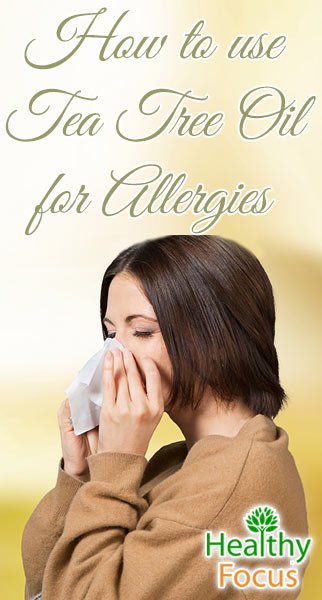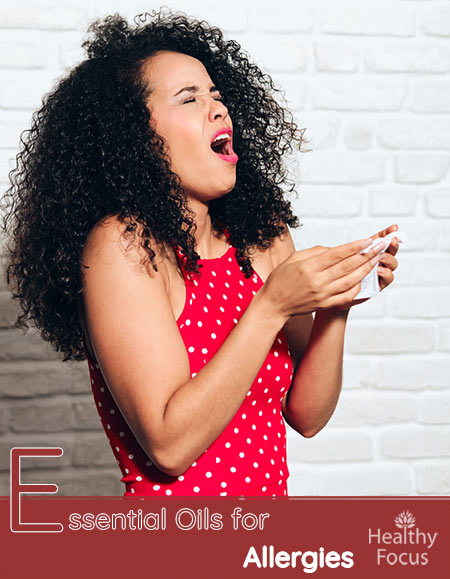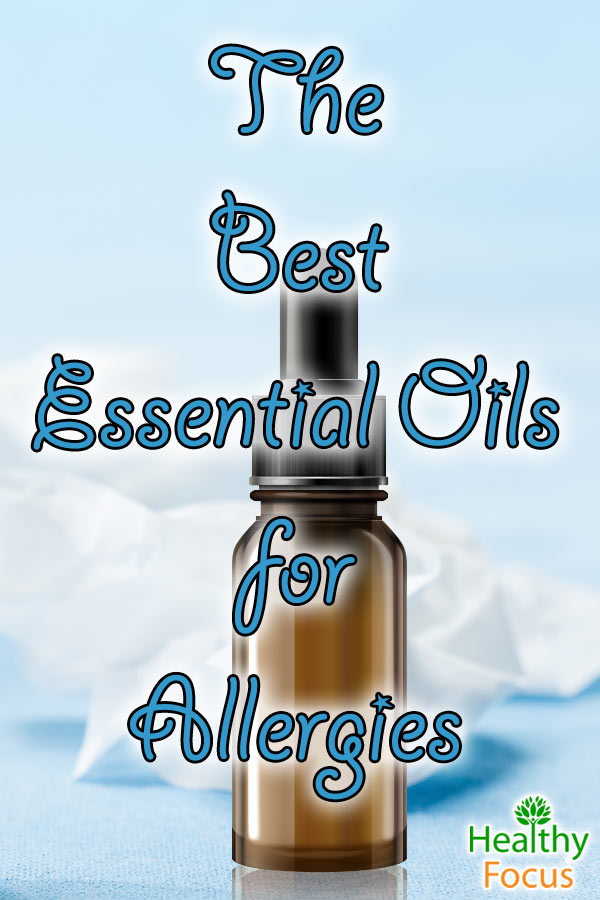Last Updated on December 7, 2019 by Marc Seward
Seasonal Allergies
Winter has said its farewells and there is long awaited warmth in the air; the flowers seem happy and the birds are tweeting merrily. Springtime is here and we can start looking forward to summer. Well, not all of us. For many people, spring brings with it any number of annoying, miserable symptoms and a start to allergy season.
Your eyes start to water, you sneeze with increasing regularity and your skin might start to itch. If you are one of the millions that suffer from seasonal allergies, then a runny nose and watery eyes are just the beginning of a potential immune system meltdown.
Aside from seasonal allergies, many people are allergic to irritants ranging from dust to pet hair to the food they eat. Typically, people try a variety of medicines to help alleviate symptoms.
I suffered from hay fever and various other allergies as a child. During my childhood my mom tried everything, I must have consumed a truckload of medically prescribed antihistamine medications as well as several courses of injections.
Histamine Reaction
Seasonal allergies occur at certain times of year when the pollen from grass, flowers and trees is more abundant. Foe many people, these pollens cause their immune systems to create antibodies which in turn cause the release of histamine, a natural substance present in all he cells in the body.
Unfortunately for allergy sufferers, histamine has an irritating effect on many parts of the upper respiratory system including the nose, sinuses and the throat. Histamine also affects the eyes causing them to redden, itch and swell up.
The Problems with Antihistamine Medication
The most common form of treatment for hay fever symptoms is some type of antihistamine medication which relieves the allergic symptoms. It works by inhibiting histamine activity on the nose and eye tissues but unfortunately it also commonly causes drowsiness especially when it is first taken.
This drowsiness can be extremely debilitating and have serious consequences for work, study and everyday life. If your work involves operating heavy machinery then it is especially significant and you should avoid this type of work until you are sure how serious the effects of the medication are.
Many driving accidents are also caused by drowsiness at the wheel. Despite the fact antihistamine medication can be very effective in alleviating your symptoms; they do not help eradicate the allergy itself and the possible side effects are far from desirable.
There is however a much more natural alternative to your allergic woes; essential oils. Essential oils have an enormous variety of health benefits and some essential oils actually have strong antihistamine properties. If you would like a more natural treatment for your allergies, read on.
Best Essential Oils for Allergies
With so many essential oils on the market, it is important to choose the right ones for your needs. When it comes to allergy relief, 3 essential oils stand out above the rest: lavender, lemon and peppermint. These 3 essential oils can be used on their own or blended together to create the perfect allergy relief. Be sure to buy the best therapeutic grade oils that you can afford, especially if you are going to apply them topically.
1. Lavender Essential Oil
Lavender oil has long been harvested for its aromatic properties and is often used in perfume products, but did you realize that lavender oil is also an effective weapon against countless ailments. As regards allergies, lavender essential oil is an effective and natural antihistamine. It also contains powerful ant-inflammatory properties and can be used to treat or relieve many of your allergic reactions. Lavender oil has a delightful aroma and is known to have an overall calming effect on your mind.
Recent research shows that inhaling lavender essential oil has an inhibitory effect on allergic inflammation and mucus membranes in bronchial asthma. Because of its excellent anti-inflammatory actions, the effects of lavender essential oil inhalation were evaluated on bronchial asthma which is characterized by allergic inflammation.
The results were very promising with the mice treated with lavender essential oil experiencing a reduction in inflammation of the airways compared with the control group that didn’t inhale the lavender. The authors concluded that lavender essential oil might be an effective potential alternative treatment for allergic bronchial asthma. (1)
- Diffuse it
You can diffuse lavender essential oil using a diffuser machine. A cold water diffuser is preferable as it more effectively atomizes the oil into a fine mist without heating and burning the oils. Diffuse the oil in your room for between an hour and two hours a day. You might consider diffusing lavender oil near your bed as it promotes a good sleep. - Apply it topically
You can safely apply undiluted lavender oil directly to your skin though if you suffer from sensitive skin, you might consider adding it to a form of carrier oil like olive or coconut oil. Simply apply a drop of lavender oil to your sinus region to ease your allergic symptoms. - Inhale it
Make sure that you take your essential oils with you wherever you are going as this is very easy to do on the go. Just rub a drop or 2 of your lavender essential oil into the palms then cup your hands over your nose and inhale steadily and deeply 5 or 6 times.You could also add a few drops of lavender oil to a tissue or a handkerchief and inhale when required. - Steam inhalation
If you are at home and you have the time, then this is another effective method of using your lavender oil. Fill your sink or a bowl with hot water and add 4 to 6 drops of lavender essential oil to the water. Cover your head and shoulders with a towel and inhale deeply for 3 to 5 minutes.
2. Lemon Essential Oil
Lemon essential oil has a refreshing and cleansing aroma and is known to have powerful anti-oxidant properties. Like lavender oil, it is used in the treatment of allergies because it works as a natural antihistamine.
How to use Lemon Essential Oil
- Lemon essential oil can be inhaled and diffused in a similar way as lavender oil. The one caveat is if you are using an electric diffuser; make sure lemon oil will not cause issues. Citrus-based oils (such as lemon/orange/lime) can corrode some diffuser rings. Check your manufacture’s recommendations to be safe.
- If you are going to apply lemon oil topically, it is recommended that you dilute it with some form of carrier oil such as olive, jojoba or coconut oil. Lemon oil may also cause a skin reaction when exposed to direct sunlight so be careful when applying it directly to your skin.
3. Peppermint Essential Oil
Not everybody enjoys the strong, menthol aroma of peppermint essential oil but it is a wonderful, versatile oil with the ability to remedy a number of ills. Peppermint essential oil has soothing pain relief properties and works as an effective anti-inflammatory remedy. It is also well known for relieving congestion and other breathing difficulties which could be brought on by allergic reaction.
How to use Peppermint Essential Oil
- Peppermint Essential oil can be diffused in the same way as lavender essential oil. One of the benefits of diffusing essential oils is that it destroys the tiny airborne bacteria and germs that might be contributing to your allergic reaction.
- You can inhale peppermint essential oil in exactly the same way as lavender oil either by applying it to your hands and inhaling or adding the oil to a handkerchief. You can also safely inhale these oils directly from the bottle if you are on the go.
- You can add peppermint essential oil to a bowl of hot water to create a steam inhaler as per the instructions above.
- Peppermint oil is safe to apply topically but if you have sensitive skin, it might be preferable to dilute it with a carrier oil. You can do this by dabbing a drop of oil onto the base of the neck or another part of your body twice a day. If you have a stuffy nose, then dilute the peppermint oil with coconut or olive oil and dab it beneath your nostrils. You can also make an effective chest rub by diluting your oil with a carrier oil and then massaging the mixture into your chest for a couple of minutes.
Combine 2 or all 3 to make the perfect blend
A combination of 2 all 3 of the above essential oils…lavender, lemon and peppermint will create the most powerful blend to fend off your allergic reactions. Some people prefer a peppermint-lavender only mixture which is electric diffuser safe.
Both of the combinations work as an effective natural antihistamine as well as an anti-inflammatory remedy and should be effective in easing most allergic responses.
Here’s what you need:
- Lavender Essential Oil
- Lemon Essential Oil
- Peppermint Essential Oil
Simply make your own recipe blend by mixing a few drops of each essential oil in the same ratio. Use the blend of oils in the same way as described above. If you are planning to apply the mixture topically, consider diluting it with a carrier oil especially if you have sensitive skin. You can use coconut, olive or jojoba oil to dilute.
Other Essential Oils for Allergies
4. Basil essential oil
Basil essential oil is another extremely effective essential oil for combating allergies because it can inhibit the body’s inflammatory responses to allergens. It is also able to support the body’s adrenal glands that are directly involved in the production of more than 50 hormones which drive so many of our important bodily functions. Basil oil basically helps your body react effectively to an outside threat by stimulating the flow of blood to your vital organs especially the heart brain and the muscles.
Basil essential oil also helps us to detoxify by ridding the body of harmful viruses and bacteria while combatting inflammation and reducing pain and bodily fatigue. Research studies have demonstrated that the essential oil of basil possesses antimicrobial properties which can destroy bacteria, mold and yeast linked to respiratory damage and asthma.
How to use Basil oil for allergies
In order to fight bodily inflammation and to regulate the immune system’s reaction to an allergen, there are several ways to use basil oil. You can help support your respiratory system by applying diluted basil oil to your body topically. Dilute a few drops of basil essential oil with an equal quantity of virgin coconut oil or jojoba oil the n massage the mixture into your chest, neck, back and temples.
Alternatively, you can prepare a steam inhaler by adding 4 or 5 drops of basil essential oil to a sink of hot water and inhaling the rich vapors for several minutes to clear up your airways.
5. Eucalyptus Essential Oil
Another very effective essential oil in improving respiration and combating the effects of allergies is eucalyptus oil. This essential oil can help improve circulation by opening up the sinuses and the lungs which helps reduce your allergic symptoms. Studies have actually demonstrated that the cold nasal sensation generated by eucalyptus oil can itself lead to an improvement in airflow and circulation.
Eucalyptus essential oil contains a compound called citronellal which has both anti-inflammatory and analgesic actions. Eucalyptus oil is also an effective expectorant which helps relieve mucus and cleanses the body of harmful toxins which can act as allergens.
A study published in 2011 discovered that eucalyptus oil was an excellent natural remedy for infections of the respiratory tract. When compared with the placebo group, those treated with a spray made with eucalyptus essential oil experienced a significant improvement in their respiratory infection symptoms. These symptoms included sore throat, cough and hoarseness.
How to use Eucalyptus oil for allergies
You can treat your allergic symptoms with eucalyptus essential oil by following several different treatment alternatives.
Inhaling eucalyptus oil either from the bottle or by diffusing it through your home can have a wonderful effect on your symptoms. Alternatively, you can combine it with a good quality base oil like coconut oil and apply it directly to your chest, back and temples whenever necessary.
Like the other essential oils mentioned, eucalyptus oil can be used to make a steam inhaler by adding a few drops to a sink full of very hot water. Cover your head and shoulders with a towel and breathe in the vapors for as long as you are able to tolerate it; this is an excellent method of improving your respiration and clearing the airways.
6. Tea Tree Essential oil
Tea tree essential oil is one of the most diverse essential oils that are available and one that you would be remiss not to have in your medical cabinet. This essential oil derived from its native Australia is a very powerful natural antibacterial oil that can destroy the airborne pathogens which cause so many allergic reactions.
Diffusing this oil in your home can help kill bacteria, mold and a variety of dangerous fungi. Tea tree essential oil otherwise known as malaleuca also has excellent natural anti-inflammatory properties and is an effective antiseptic agent.
When applied directly to your skin, tea tree essential oil can help to destroy dangerous bacteria, fungi and other toxic microorganisms. It is also used by many people as an effective disinfectant to clean the home and to eliminate all trace of allergens.
A German study published in the year 2000 demonstrated that this powerful essential oil could destroy a wide variety of bacteria fungi and yeast. This is important in terms of allergic reaction because these dangerous microbes can cause inflammation and also cause the immune response to overreact.
How to use Tea tree oil for allergies
Tea tree oil can be diffused through he home to eliminate airborne pathogens. It can also be used to disinfect worktops and clean the stubborn grime from kitchen and bathroom area. To apply this oil topically, add a few drops of tea tree oil to a sufficient quantity of carrier oil such as virgin coconut, sweet almond or jojoba oil and then massage it into your temples, chest and sinuses
While the essential oils already discussed are the best known essential oils for tackling allergic reaction, other essential oils you may have in your kit might prove to be equally as effective.
- Roman Chamomile essential oil can be used to treat rashes and other skin reactions caused by an allergic response.
- German Chamomile Oil is very well known for its emotional benefits and stress relief properties but it can also be used to great effect by hay fever sufferers during the allergy season. This essential oil has a dual action as an antihistamine and anti-allergen making it a very useful and safe alternative to conventional pharmaceutical medications.
- Eucalyptus Essential Oil relieves seasonal allergic reactions and respiratory issues. It is at its most effective when inhaled in a steam mix. It is safe to inhale and use topically but should never be ingested undiluted.
- Lemon Grass Essential Oil has antiseptic properties and can be used to relieve skin reactions as well as being a natural painkiller.
- Helichrysum Essential Oil is another very useful oil for those prone to allergic reactions. It may be best known for its healing abilities but it is an excellent natural anti-inflammatory and can also be used to combat allergic reactions and ease allergic irritation and symptoms such as coughing and sneezing.
- Cypress Essential Oil has decongestant abilities that make it an excellent natural option whenever you need to clear the nose and sinuses from irritations caused by histamine reaction. You can use cypress oil in a variety of ways but to clear the respiratory passages nothing works quite as well as a facial steam bath. Fill a bowl or sink with hot water and add 2 or 3 drops of cypress oil. Cover your head with a towel and lean over the bowl making sure your eyes are closed. Inhale the soothing vapors for as long as you can tolerate them for quick relief.
So next time you or someone in your family starts having an allergy attack—try essential oils before you reach for the Claritin. It takes a little more time but once you get in the habit it is a great natural alternative. With enough practice, you can replace most of your antihistamine use and remain allergy symptom free naturally.
(1) http://www.ncbi.nlm.nih.gov/pubmed/24909715


Leave a Reply
You must be logged in to post a comment.